Themed collection 2023 Journal of Materials Chemistry C HOT Papers

2D and quasi-2D hybrid perovskites containing organic cations with an extended conjugated system: opportunities and challenges
Hybrid perovskites containing organic cations with an extended conjugated system are an upcoming class of hybrid semiconductors for optoelectronics. We review the opportunities and challenges associated with these versatile materials.
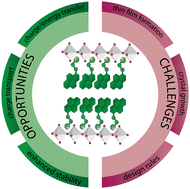
J. Mater. Chem. C, 2023,11, 12877-12893
https://doi.org/10.1039/D3TC02553E
Symmetry breaking: an efficient structure design of nonfullerene acceptors to reduce the energy loss in organic solar cells
This perspective summarizes the recently encouraging progress of asymmetric fused ring electron acceptors and tries to show a picture of the relationship between the asymmetric molecular structure, energy loss and device performance.
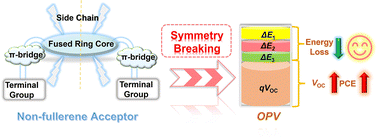
J. Mater. Chem. C, 2023,11, 5257-5270
https://doi.org/10.1039/D2TC05280F
Perovskite material-based memristors for applications in information processing and artificial intelligence
This paper systematically reviews the preparation technologies, research progress, and typical applications of perovskite material-based memristors.
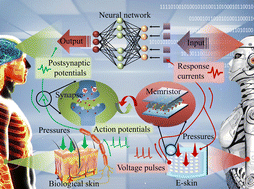
J. Mater. Chem. C, 2023,11, 13167-13188
https://doi.org/10.1039/D3TC02309E
Wearable electrochromic materials and devices: from visible to infrared modulation
This review systematically introduces and discusses the recent advances and progress in wearable electrochromic devices with optical modulation from the visible to infrared range.
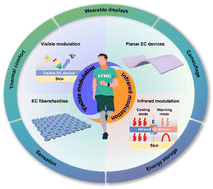
J. Mater. Chem. C, 2023,11, 7183-7210
https://doi.org/10.1039/D3TC01142A
Recent progress of copper halide perovskites: properties, synthesis and applications
Improvement in the synthesis of copper halide perovskites is fundamental in applications of different areas including LEDs, energy harvesting, detection, etc., and further highlights the direction for future research.
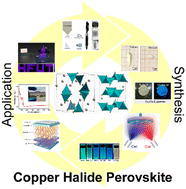
J. Mater. Chem. C, 2023,11, 6260-6275
https://doi.org/10.1039/D3TC00503H
Carbon-rich macrocycles and carbon nanoribbons as unique optical materials
Carbon-rich macrocycles and carbon nanoribbons act as unusual optical materials in the free form or when combined with other guests.
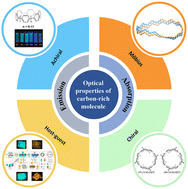
J. Mater. Chem. C, 2023,11, 4267-4287
https://doi.org/10.1039/D2TC05492B
Review on the promising roles of alkali metals toward highly efficient perovskite light-emitting diodes
Alkali metals have been used to obtain high-performance perovskite light-emitting diodes. In this review, we present an overview of the advances in alkali metal ions applied in PeLEDs. Challenges and the outlook are presented for their future applications.
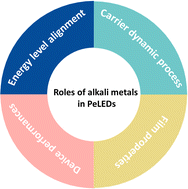
J. Mater. Chem. C, 2023,11, 2011-2025
https://doi.org/10.1039/D2TC04629F
Liquid metal-based printing synthesis of bismuth-doped gallium oxide and its application for a photodetector
Bi-doped gallium oxide thin films were prepared via van der Waals printing technology and exhibit excellent optoelectronic detection performance.
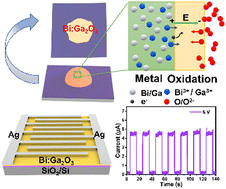
J. Mater. Chem. C, 2023,11, 12156-12162
https://doi.org/10.1039/D3TC02405A
Towards bubble-free, centimeter-sized bilayer graphene enabled by backside lamination
Bubble-free bilayer graphene has been fabricated by directly dry-laminating the clean backsides of two single graphene layers with designed asymmetric transfer media.

J. Mater. Chem. C, 2023,11, 11814-11821
https://doi.org/10.1039/D3TC01513K
Versatile chewed gum composites with liquid metal for strain sensing, electromagnetic interference shielding and flexible electronics
Versatile chewed gum composites with liquid metal were constructed by the stretch-knead-roller coating method for the high-value utilization of discarded gum waste.
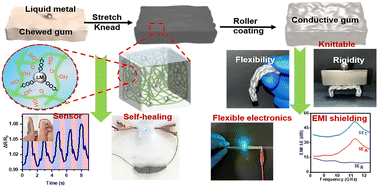
J. Mater. Chem. C, 2023,11, 10455-10463
https://doi.org/10.1039/D3TC02067C
A nonbenzenoid acepleiadylene derivative with small band gap for near-infrared organic phototransistors
A new nonbenzenoid acepleiadylene derivative (APD-DPP) has been synthesized, exhibiting NIR absorption and a higher charge mobility than its pyrene-based isomers. These features have enabled its application in high-performance NIR photodetectors.

J. Mater. Chem. C, 2023,11, 10149-10153
https://doi.org/10.1039/D3TC01520C
The role of the degree of polymerization in the chiroptical properties of dynamic asymmetric poly(diphenylacetylene)s
The chiroptical properties of an asymmetric poly(diphenylacetylene) are related to the degree of polymerization, being opposite for polymers and oligomers.

J. Mater. Chem. C, 2023,11, 8378-8382
https://doi.org/10.1039/D3TC01419C
Theoretical investigation of the non-metal sites of two-dimensional conjugated metal–organic frameworks based on benzenehexathiol for hydrogen evolution activity enhancement
Interlayer interactions are proved to be essential in determining the accurate active site of metal–benzenehexathiol (M–BHT) for hydrogen evolution and Mo–BHT is predicted to be a new promising member of the family of highly active M–BHT catalysts.
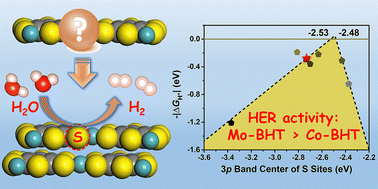
J. Mater. Chem. C, 2023,11, 7989-7994
https://doi.org/10.1039/D3TC00238A
A photo-responsive organic electrochemical transistor
OECTs capable of undergoing a reversible modulation of ON current by up to 30% via irradiation with UV and visible light were realised via blending of a mixed ionic–electronic polymer (pgBTTT) and a photoswitching spiropyran derivative (OEG-SP).
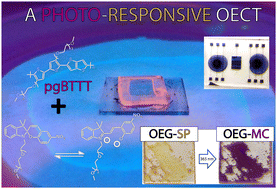
J. Mater. Chem. C, 2023,11, 7982-7988
https://doi.org/10.1039/D2TC05444B
Asymmetric diarylamine guests for a host–guest system with stimulus-responsive room temperature phosphorescence
The Förster resonance energy transfer (FRET) process has been utilized to construct host–guest systems with stimuli-responsive room-temperature phosphorescence (RTP).

J. Mater. Chem. C, 2023,11, 6290-6295
https://doi.org/10.1039/D3TC00356F
Screen printing of stretchable silver nanomaterial inks for a stable human–machine interface
This paper proposes a strategy for the large-scale preparation of stretchable silver inks, which can be applied to fabricate a conformal on-skin electrode array via screen printing for a stable human–machine interface.
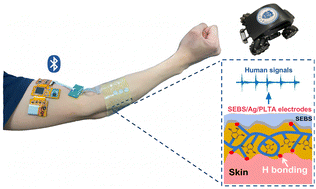
J. Mater. Chem. C, 2023,11, 5009-5017
https://doi.org/10.1039/D3TC00388D
Solution-processed single-emissive-layer WOLEDs with high efficiency and ultra-high color rendering index beyond 90
We devised single-EML SP-WOLEDs with luminescent gold(III) emitters featuring high EQEmax of 12.72%, CIE coordinates of (0.40, 0.40), and CRI of 93, which is among the best values for the single-EML SP-WOLEDs with CRI > 90 reported in the literature.
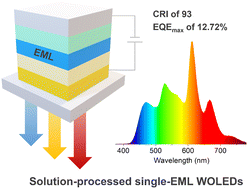
J. Mater. Chem. C, 2023,11, 3936-3943
https://doi.org/10.1039/D2TC05257A
Amplification of dissymmetry factors by dihedral angle engineering in donor–acceptor type circularly polarized luminescence materials
A new donor–acceptor type circularly polarized luminescence material has been developed, and a dihedral angle engineering strategy has been demonstrated for the first time to significantly amplify the luminescence dissymmetry factors.

J. Mater. Chem. C, 2023,11, 893-897
https://doi.org/10.1039/D2TC04848E
Tuning CPL by helical pitch modulation in helically flexible small organic multichromophores
Modulating the helical pitch by simply playing with steric effects in a series of helically flexible BODIPY dimers allows easy tuning of the luminescence dissymmetry factors associated with their circularly polarized emissions.
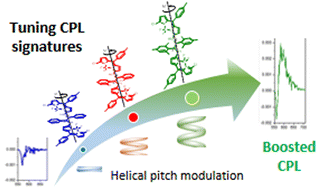
J. Mater. Chem. C, 2023,11, 456-461
https://doi.org/10.1039/D2TC04793D
Boosting organic room-temperature phosphorescence performance through joint luminescence sensitization
Boosting organic room-temperature phosphorescence performance through luminescence sensitization involving multi-step energy transfer.
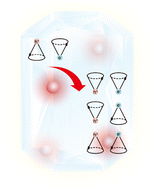
J. Mater. Chem. C, 2023,11, 113-117
https://doi.org/10.1039/D2TC04759D
Dielectric microbead-decorated conductive polymer composites towards ultrathin high-performance terahertz absorbing coatings
Embedding dielectric microbeads into conductive polymers endows ultrathin THz absorbers with >99% absorption. The approach provides a scalable design for next-generation EMI shielding coatings.

J. Mater. Chem. C, 2025, Advance Article
https://doi.org/10.1039/D5TC03391H
Boosting low-field energy storage performance in a weakly coupled lead-free ergodic relaxor of BaTiO3–Bi(Zn2/3Ta1/3)O3
A novel weakly coupled lead-free ergodic relaxor BaTiO3–Bi(Zn2/3Ta1/3)O3 is designed to achieve good energy storage properties under low electric fields. The underlying mechanism of the enhanced properties is elucidated.

J. Mater. Chem. C, 2025, Advance Article
https://doi.org/10.1039/D5TC03136B
Room temperature ferromagnetic ordering from bound magnetic polarons in rare-earth-doped ultrathin MoS2 nanosheets
Rare-earth (Tb3+, Re3+ and Eu3+)-doped MoS2 nanosheets were synthesized and assessed as dilute magnetic semiconductors. Their room temperature ferromagnetic properties were ascribed to bound magnetic polarons with a TC of >300 K.

J. Mater. Chem. C, 2025,13, 15873-15885
https://doi.org/10.1039/D5TC01225B
A polyacrylamide/gelatin/tannic acid-modified carbon nanotube double network hydrogel with skin temperature-triggered adhesion and high sensitivity for wearable sensors
A PAM/gelatin/TA-CNT hydrogel with skin temperature-triggered adhesion and excellent sensing properties.

J. Mater. Chem. C, 2024,12, 14330-14342
https://doi.org/10.1039/D4TC02900C
Construction of a hollow nickel–magnesium ferrite decorated nitrogen-doped reduced graphene oxide composite aerogel for highly efficient and broadband microwave absorption
In this work, nitrogen-doped reduced graphene oxide/hollow nickel–magnesium ferrite composite aerogel was prepared, which had a unique three-dimensional porous network structure, broadband and high-efficiency microwave absorption performance.
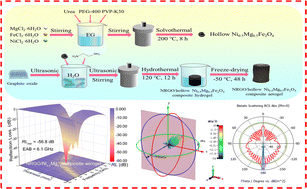
J. Mater. Chem. C, 2023,11, 16961-16971
https://doi.org/10.1039/D3TC04067D
A wet-resistant and low-temperature self-healing organohydrogel sensor towards direction-recognition and information transmission in extreme environments
A superior self-healing organohydrogel with multi-environmental stability for direction-recognition and information transmission under humid environments and low-temperature conditions.
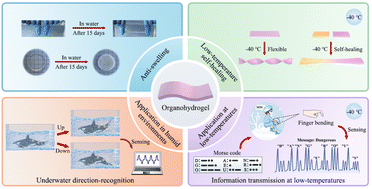
J. Mater. Chem. C, 2023,11, 16950-16960
https://doi.org/10.1039/D3TC03236A
Magnetic order in a quenched-high-temperature-phase of Cu-doped MnBi
Cu-doped MnBi crystals adopt a new type of high-temperature phase of the well-known permanent magnet, MnBi. The magnetic diagram demonstrates the evolution of magnetic orders along with increasing concentration of Cu in such a system.
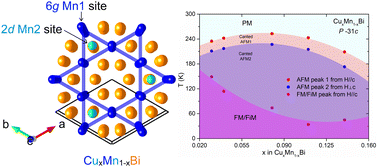
J. Mater. Chem. C, 2023,11, 16509-16517
https://doi.org/10.1039/D3TC02995F
Ultrahigh phase-transition electric field and giant energy density in NaNbO3–Bi(Zn0.5Sn0.5)O3 lead-free antiferroelectric ceramics
Synergistic effect of reduced off-centering displacements of B-site cations, enhanced antiferrodistortive and decreased AFE domain size leads to significantly enhanced EAF of ≥45 kV mm−1 and Wrec of ∼5.5 J cm−3 in NaNbO3-based lead-free ceramics.
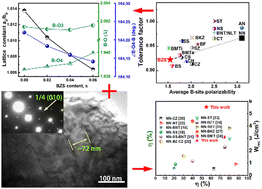
J. Mater. Chem. C, 2023,11, 16482-16490
https://doi.org/10.1039/D3TC03815G
A mid-IR tunable graphene metasurface for ultrasensitive molecular fingerprint retrieval and refractive index sensing
Using the electrically tunable nature of graphene in the mid-IR range, a one-to-many mapping strategy between the metasurface and spectral signals is presented for ultrasensitive molecular fingerprint detection and refractive index sensing.
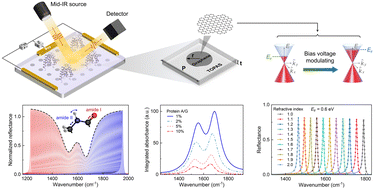
J. Mater. Chem. C, 2023,11, 16501-16508
https://doi.org/10.1039/D3TC03554A
Superior energy storage performance and ultrafast discharge of NBBT-based ceramics via introducing linear dielectric additives and rare earth oxides
Ferroelectric ceramics have low energy storage performance due to their nearly square hysteresis loops and low dielectric breakdown strength, which affects their practical applications for high-power energy storage capacitors.

J. Mater. Chem. C, 2023,11, 16491-16500
https://doi.org/10.1039/D3TC03477A
Skin-mimetic tough polyurethane ionogel for use in soft ionotronics
An artificial skin that simulates not only the mechanical performance but also the conductive behavior of natural skin is developed based on a zwitterionic polyurethane ionogel, which could be used as wearable sensors.
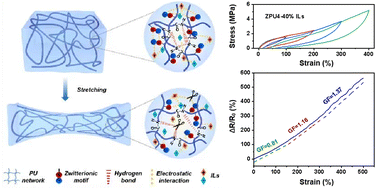
J. Mater. Chem. C, 2023,11, 16168-16176
https://doi.org/10.1039/D3TC03661H
Reducing intersystem crossing rates of boron emitters for high-efficiency and long-lifetime deep-blue OLEDs
An external quantum efficiency of 6.7% and a long operational lifetime of 136 h at 1000 cd m−2 were simultaneously realized for organic light-emitting diodes based on the deep-blue boron emitter (B-N-S-3), owing to the reduced intersystem crossing rate of the emitter.

J. Mater. Chem. C, 2023,11, 16159-16167
https://doi.org/10.1039/D3TC03025C
Efficiency enhancement of dopant-free perovskite solar cells by employing fluoro-substituted electron donor–electron acceptor type polymeric hole-transporting materials
PBCz-FBTz with fluoro-substituents exhibits superior hole transport properties and passivation effects to PBCz-BTz. The devices employing PBCz-FBTz as dopant-free hole-transporting material show a champion PCE of 20.71% with excellent stability.
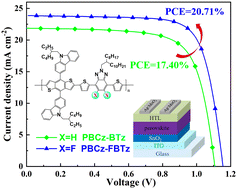
J. Mater. Chem. C, 2023,11, 15848-15854
https://doi.org/10.1039/D3TC03097K
The role of terminal coordinated amides in a series of Ca-tatb frameworks: pore size regulation and fluorescence sensing tunability
Amide solvents were used as terminal coordinated molecules to tune the pore sizes of Ca-MOFs, achieving the pore size controllable fluorescence sensing performance towards trinitrophenol (TNP).
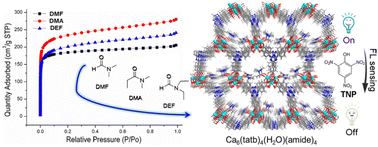
J. Mater. Chem. C, 2023,11, 15841-15847
https://doi.org/10.1039/D3TC03053A
Piezochromism and anomalous near-infrared luminescence evolution of BaCuSi4O10 and BaCuSi2O6via pressure-induced phase transition
Piezochromism of BaCuSi4O10 and BaCuSi2O6 during compression, and the evolution of near-infrared luminescence with pressure.
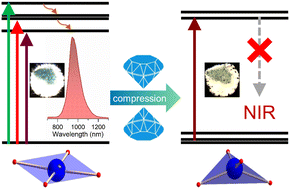
J. Mater. Chem. C, 2023,11, 15833-15840
https://doi.org/10.1039/D3TC02915H
A complete explanation of the plasmonic colours of gold nanoparticles and of the bichromatic effect
Gold nanoparticles are known for their red or violet colours in transmission related to the localized plasmon resonance. They can sometimes generate an orange colour in reflection. These properties make them a new type of colouring pigment.
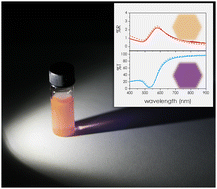
J. Mater. Chem. C, 2023,11, 15824-15832
https://doi.org/10.1039/D3TC02669H
Superhydrophobic coating with a micro- and nano-sized MnO2/PDMS composite structure for passive anti-icing/active de-icing and photothermal applications
The prepared coating had good superhydrophobic and photothermal de-icing properties. It could be applied to personal thermal management, oil–water separation and solar-steam generation.

J. Mater. Chem. C, 2023,11, 15443-15453
https://doi.org/10.1039/D3TC03149G
Design and synthesis of non-fused non-fullerene acceptors containing naphthobisthiadiazole for organic solar cells
Two non-fullerene acceptors containing naphtho[1,2-c:5,6-c′]bis([1,2,5]thiadiazole) moieties with fluorinated and chlorinated dicyanomethylidene-indan-1-one units as the flanking end-groups were developed and used for constructing organic solar cells.

J. Mater. Chem. C, 2023,11, 15426-15434
https://doi.org/10.1039/D3TC01742G
Simultaneously enhancing the performance of perovskite solar cells and suppressing lead leakage via an interface modification strategy
The non-radiative recombination caused by perovskite and its relevant interfaces greatly impedes further improvement of the efficiency and stability of PSCs, hindering their further commercialization.

J. Mater. Chem. C, 2023,11, 14589-14596
https://doi.org/10.1039/D3TC02455E
Engineered current path of vertical organic phototransistors for smart optoelectronic applications
A multifunctional vertical organic phototransistor for smart optoelectronic applications has been demonstrated by precisely engineering the current path.
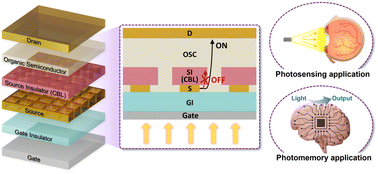
J. Mater. Chem. C, 2023,11, 14580-14588
https://doi.org/10.1039/D3TC02571C
Hypersensitive ratiometric temperature sensing in a bimetallic lanthanide metal–organic framework
The bimetallic Ln-MOFs exhibit temperature dependent luminescent behavior, proving that chemical components would affect the ratiometric luminescent temperature sensing performance.
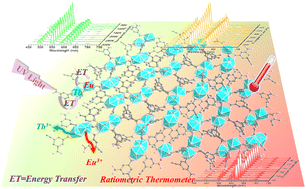
J. Mater. Chem. C, 2023,11, 14545-14550
https://doi.org/10.1039/D3TC03179A
A MOF/hydrogel film-based array sensor for discriminative detection of nitrophenol isomers
A MOF/hydrogel film-based array sensor is prepared and exhibits excellent ability to recognize three nitrophenol isomers.

J. Mater. Chem. C, 2023,11, 14551-14558
https://doi.org/10.1039/D3TC02812G
Lead-free double-perovskite Cs4CuSb2Cl12 as an efficient saturable absorber for Q-switched mode-locking fiber lasers
The lead-free double-perovskite Cs4CuSb2Cl12 is used for Q-switched mode-locking an Yb-doped fiber laser with ∼1 μm NIR modulation, high pulse-energy operation and low saturation power, showing huge potential for integration into photonic devices.

J. Mater. Chem. C, 2023,11, 14127-14133
https://doi.org/10.1039/D3TC03202G
Effect of a benzothiadiazole spacer on transport properties and N-doping of naphthalene-diimide-based copolymers
Incorporation of a benzothiadiazole moiety into a thiophene and naphthalene diimide-based copolymer improves electron mobility, conductivity and stability in the doped state.

J. Mater. Chem. C, 2023,11, 14108-14118
https://doi.org/10.1039/D3TC02816J
An ultra-flexible temperature-insensitive strain sensor
Using a sensor material consisting of a conductive polymer and Ag nanoparticles, an ultra-flexible temperature-insensitive strain sensor is developed with a minimum bending radius of 0.14 mm and temperature coefficient of resistance of 0.11% K−1.

J. Mater. Chem. C, 2023,11, 14070-14078
https://doi.org/10.1039/D3TC02960C
Beneficial effects of tensile strain on charge carrier lifetime in metal halide perovskites containing halogen vacancies
Direct and trap-assisted recombination of electrons and holes is suppressed by applying tensile strain in lead halide perovskites containing halogen vacancies.

J. Mater. Chem. C, 2023,11, 14097-14107
https://doi.org/10.1039/D3TC02828C
Phosphorylation amplified asymmetry of spiro[acridine-9,9′-xanthene] hosts for efficient blue and white thermal activated delay fluorescent diodes
“Molecular asymmetry” for spiro host development led to synergy between functional group and asymmetric core in electronic and steric effects, rendering ∼100% photoluminescence quantum yield and top-rank efficiencies of 69.3 lm W−1 and 22.9% from the single-emissive-lay TADF WOLEDs.
![Graphical abstract: Phosphorylation amplified asymmetry of spiro[acridine-9,9′-xanthene] hosts for efficient blue and white thermal activated delay fluorescent diodes](/en/Image/Get?imageInfo.ImageType=GA&imageInfo.ImageIdentifier.ManuscriptID=D3TC02802J&imageInfo.ImageIdentifier.Year=2023)
J. Mater. Chem. C, 2023,11, 14119-14126
https://doi.org/10.1039/D3TC02802J
Ferrovalley and topological phase transition behavior in monolayer Ru(OH)2
Monolayer Ru(OH)2 is an FV semiconductor with a high Curie temperature, and it also exhibits topological phase transition behavior under strain.
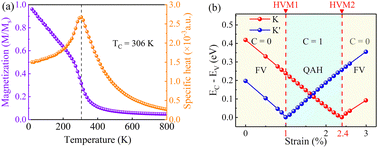
J. Mater. Chem. C, 2023,11, 13714-13724
https://doi.org/10.1039/D3TC02877A
High piezoelectric, dielectric relaxation and semiconductor properties in a one-dimensional organic–inorganic hybrid complex: [2-methyl-1,5-pentanediamine][BiCl5]
Molecular-based multifunctional material [2-methyl-1,5-pentanediamine][BiCl5] has interesting properties, such as phase transition, piezoelectric, second harmonic generation, dielectric relaxation, semiconductor and so on.
![Graphical abstract: High piezoelectric, dielectric relaxation and semiconductor properties in a one-dimensional organic–inorganic hybrid complex: [2-methyl-1,5-pentanediamine][BiCl5]](/en/Image/Get?imageInfo.ImageType=GA&imageInfo.ImageIdentifier.ManuscriptID=D3TC02873A&imageInfo.ImageIdentifier.Year=2023)
J. Mater. Chem. C, 2023,11, 13675-13680
https://doi.org/10.1039/D3TC02873A
Achieving dynamic quintuple-mode luminescence in Ca3Ti2O7:Pr3+,Er3+ phosphor for anti-counterfeiting applications
In this work, we have synthesized Ca3Ti2O7:Pr3+, Er3+ phosphors with PL, LPL, PSL, UCL, and ML phenomena. Based on the skillful cooperation of PSL and UCL, dynamic anti-counterfeiting technology has been realized by modulating the 980 nm laser.

J. Mater. Chem. C, 2023,11, 13725-13732
https://doi.org/10.1039/D3TC02783J
B/N/O-participated multi-resonance TADF emitters by a simple peripheral decoration strategy enable high-efficiency electroluminescence with EQEs up to 36.5%
This work reports highly efficient B/N/O-participated multi-resonance thermally activated delayed fluorescence emitters with a simple peripheral decoration strategy, enabling electroluminescence device with external quantum efficiency up to 36.5%.
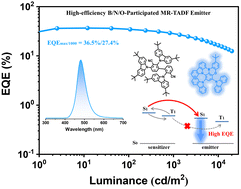
J. Mater. Chem. C, 2023,11, 13733-13739
https://doi.org/10.1039/D3TC02574H
Plasma-free metal-assisted chemical etching producing three-dimensional gallium nitride structures
Gallium nitride (GaN) is a third-generation wide bandgap semiconductor well-suited for power electronics and ultraviolet optoelectronics.

J. Mater. Chem. C, 2023,11, 13707-13713
https://doi.org/10.1039/D3TC02731G
Physical insights into the ultralow lattice thermal conductivity and high thermoelectric performance of bulk LiMTe2 (M = Al, Ga)
Lattice anharmonicity induced ultra-low lattice thermal conductivities, high Seebeck coefficients, and optimum electrical thermal conductivities lead to a high figure of merits in n-type and p-type ternary chalcogenides LiMTe2 (M = Al, Ga).
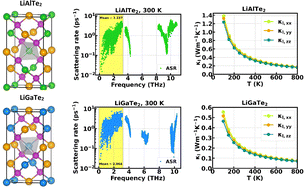
J. Mater. Chem. C, 2023,11, 13691-13706
https://doi.org/10.1039/D3TC02314A
Organic photothermal cocrystal with high stability for efficient solar-driven water evaporation
A novel photothermal conversion cocrystal of TMBZ-TCNB exhibiting 59.46% photothermal efficiency under 808 nm laser radiation. The TMBZ-TCNB-PU interfacial evaporator shows an evaporation efficiency of 63.49% under 1 kW m−2 radiation.
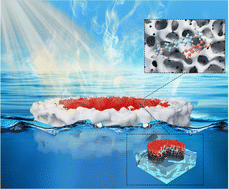
J. Mater. Chem. C, 2023,11, 13274-13280
https://doi.org/10.1039/D3TC02277C
Layer-by-layer blade-coated organic solar cells with non-halogenated solvents and non-halogenated additive via adjusting morphology and crystallization
Non-halogenated solvent additive DMN induces nucleation and crystal growth of Y6 molecules twice during the LBL blade-coating process, promoting the crystallization and nanoscale phase separation and leading to enhanced PCE of LBL blade-coated OSCs.

J. Mater. Chem. C, 2023,11, 13263-13273
https://doi.org/10.1039/D3TC02562D
Investigation of sensitive SERS detection via a perovskite-coated Ag nanofilm
A perovskite-coated silver nanofilm substrate realizes high sensitivity detection of probe molecules.

J. Mater. Chem. C, 2023,11, 13256-13262
https://doi.org/10.1039/D3TC02423G
Impacts of PbI2 on high-efficiency perovskite solar cells: exploring intercalation orientations and defects
The parallel and vertical intercalations of the layered PbI2 in CsPbI3 result in type-I and type-II band alignments, respectively. The deep-level states caused by certain defects in PbI2 are not active recombination centers.
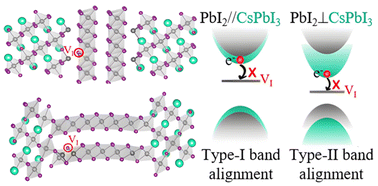
J. Mater. Chem. C, 2023,11, 13281-13289
https://doi.org/10.1039/D3TC02770H
3D hierarchical networks constructed from interlayer-expanded MoS2 nanotubes and rGO as high-rate and ultra-stable anodes for lithium/sodium-ion batteries
The MoS2 nanotubes assembled from MoS2 nanosheets are wrapped in rGO. The NC-MoS2@rGO is endowed with ultrahigh capacity, high cycle stability and rate capability. Addition of graphene has a positive effect on battery performance by DFT calculation.

J. Mater. Chem. C, 2023,11, 13228-13243
https://doi.org/10.1039/D3TC02333H
Textile-based electrophoretic electronic paper displays with machine-washable, tailorable, and thermostatic functions for truly wearable displays
The textile-based electrophoretic display has been created and exhibited high contrast ratio, a low voltage, and good stability. The static display clothing and a dynamic display wristband watch show the potential for truly wearable displays.

J. Mater. Chem. C, 2023,11, 13244-13255
https://doi.org/10.1039/D3TC01412F
The effect of non-intrinsic factors on pulse discharge and energy releasing performance of dielectric ceramics
The influence of non-intrinsic factors on the charge–discharge performance of energy storage ceramic capacitors is studied, and an ideal test standard for charge–discharge of energy storage ceramic capacitors is proposed.
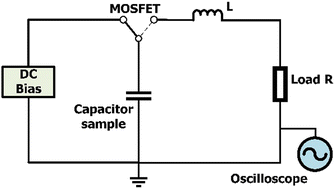
J. Mater. Chem. C, 2023,11, 13220-13227
https://doi.org/10.1039/D3TC01737K
Enhancing upconversion via constructing local energy clusters in lanthanide-doped fluoride nanoparticles
By introducing local energy clusters within the NaGdF4 lattice, the optimal Er3+, Ho3+ and Tm3+ doping concentrations were increased to 8, 8, and 2 mol%, respectively. The UC intensity was enhanced approximately 54.3 times by doping Ca2+.
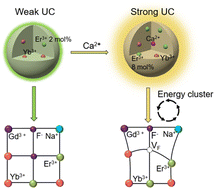
J. Mater. Chem. C, 2023,11, 12915-12921
https://doi.org/10.1039/D3TC02494F
Ti3+ self-doping in BaTiO3 ceramic for multi-sensor applications: reduced bandgap with maintained ferroelectric properties
Ti3+ self-doped BaTiO3 has been successfully developed as a multifunctional sensor, demonstrating outstanding performance in detecting light intensity, force, and temperature.
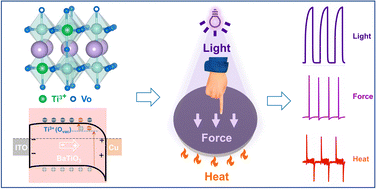
J. Mater. Chem. C, 2023,11, 12561-12569
https://doi.org/10.1039/D3TC02590J
The crucial role of non-conjugated functional groups in the triplet manipulation of heterocycle aromaticity hot exciton materials
Beyond steric effect, non-conjugated functional groups play a crucial role in triplet manipulation of heterocylce aromaticity hot exciton material. A series of new blue-emitting molecules were successfully fabricated with high luminous efficiency.

J. Mater. Chem. C, 2023,11, 12511-12516
https://doi.org/10.1039/D3TC02831C
Synthesis, optical and redox attributes of core-/bay-substituted thionated NDIs, PDIs and their diverse radical anions
Synthesis of thirteen diversely functionalized NDIs/PDIs and their radical anions are shown with a large increase in the radical anion stability with the extent of thionation, and hold promise as new open-shell NIR absorbers and redox-catalysts.
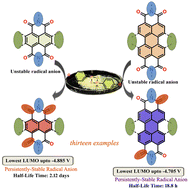
J. Mater. Chem. C, 2023,11, 12543-12549
https://doi.org/10.1039/D3TC02187D
Single crystal growth and phase transition mechanism of KCsMoP2O9 with efficient second harmonic generation via the emerging additional periodic phase technology
The phase transition mechanism of KCMP crystals was revealed and an efficient second harmonic generation output was achieved using emerging additional periodic phase technology.

J. Mater. Chem. C, 2023,11, 12550-12560
https://doi.org/10.1039/D3TC02071A
Synthesis of nitrogen-doped graphene aerogels modified by magnetic Fe3O4/Fe/C frameworks as excellent dual-band electromagnetic absorbers
Nitrogen-doped reduced graphene oxide/ferroferric oxide/iron/carbon composite aerogels were prepared, which had a unique three-dimensional porous network structure and excellent dual-band electromagnetic absorption performance.

J. Mater. Chem. C, 2023,11, 12185-12194
https://doi.org/10.1039/D3TC02696E
A synergistic approach to attain high piezoelectricity in a Pb(Ni, Nb)O3–Pb(Lu, Nb)O3–PbTiO3 system
This work exploits the synergistic effect of multiphase coexistence and local structural heterogeneity to achieve high piezoelectricity in relaxor ferroelectric materials.
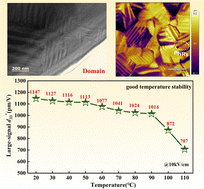
J. Mater. Chem. C, 2023,11, 11895-11904
https://doi.org/10.1039/D3TC02001K
High-loading ultrastable CsPbBr3 perovskite quantum dots in hierarchical silicalite-1 by elimination of co-templates for multimodal optical applications
Hierarchical silicalite-1 co-templated by carbon nanotube and tetrapropylammonium hydroxide was used to confine CsPbBr3 PQDs, showing multiple functions for optical thermometry, fingerprint identification, Fe3+ detection and anti-counterfeiting.
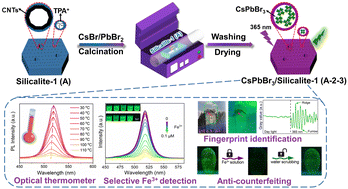
J. Mater. Chem. C, 2023,11, 11865-11875
https://doi.org/10.1039/D3TC01812A
Variable stiffness and fast-response soft structures based on electrorheological fluids
A soft structure with continuously variable stiffness and fast response was designed. Varying the electric field strength (0 to 4.5 kV mm−1), the rate of stiffness variation is over 1500%. The response time to load change is within 65 ms.

J. Mater. Chem. C, 2023,11, 11842-11850
https://doi.org/10.1039/D3TC01563G
Donor-modified multiple resonance emitters with accelerated reverse intersystem crossing towards high-efficiency and narrowband deep-blue OLEDs
The strategic incorporation of pendant acridan units to the multiple resonance framework expedited the reverse intersystem crossing process, deriving a set of high-performance deep-blue emitters with external quantum efficiencies up to 28.7%.
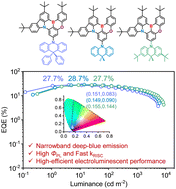
J. Mater. Chem. C, 2023,11, 11885-11894
https://doi.org/10.1039/D3TC02409A
About this collection
This on-going web collection features all the articles published in Journal of Materials Chemistry C in 2023 marked as HOT (selected by our Editors as especially significant based on reviewers’ recommendations and their own appraisal). Congratulations to all the authors whose articles are featured!